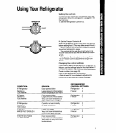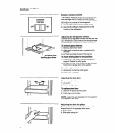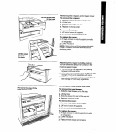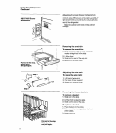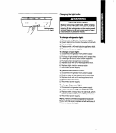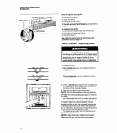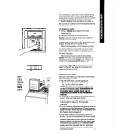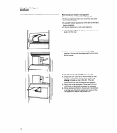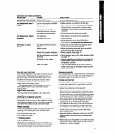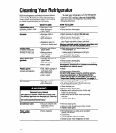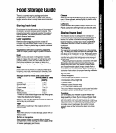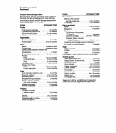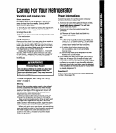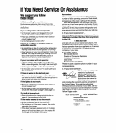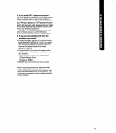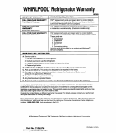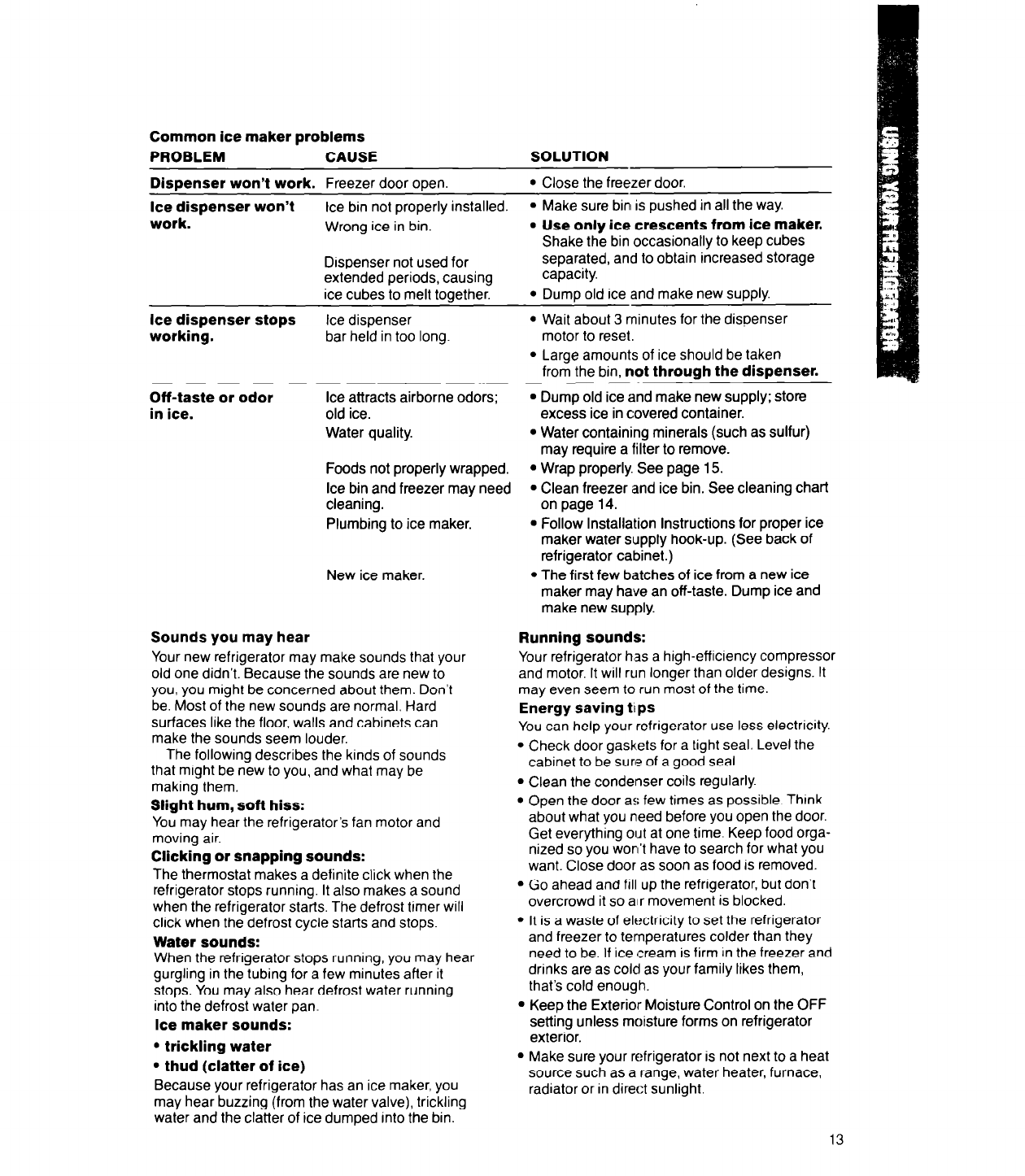
Common ice maker problems
PROBLEM CAUSE
SOLUTION
Dispenser won’t work. Freezer door open.
l
Close the freezer door.
Ice dispenser won’t
Ice bin not properly installed.
l
Make sure bin is pushed in all the way.
work.
Wrong ice in bin.
l
Use only ice crescents from ice maker.
Shake the bin occasionally to keep cubes
Drspenser not used for
separated, and to obtain increased storage
extended periods, causing
capacity.
ice cubes to melt together.
l
Dump old Ice and make new supply.
Ice dispenser stops
Ice dispenser
l
Wait about 3 minutes for the dispenser
working.
bar held in too long.
motor to reset.
l
Large amounts of ice should be taken
from the bin, not through the dispenser.
Off-taste or odor
in ice.
Ice attracts airborne odors;
l
Dump old ice and make new supply; store
old ice.
excess ice in covered container.
Water quality.
l
Water containing minerals (such as sulfur)
may require a filter to remove.
Foods not properly wrapped.
l
Wrap properly. See page 15.
Ice bin and freezer mav need
l
Clean freezer and ice bin. See cleaning chart
cleaning.
Plumbing to ice maker.
New ice maker.
Sounds you may hear
Your new refrigerator may make sounds that your
old one didn’t. Because the sounds are new to
you, you might be concerned about them. Don’t
be. Most of the new sounds are normal. Hard
surfaces like the floor, walls and cabinets can
make the sounds seem louder.
The following describes the kinds of sounds
that might be new to you, and what may be
making them.
Slight hum, soft hiss:
You may hear the refrigerator’s fan motor and
moving air.
Clicking or snapping sounds:
The thermostat makes a definite click when the
refrigerator stops running. It also makes a sound
when the refrigerator starts. The defrost timer will
click when the defrost cycle starts and stops.
Water sounds:
When the refrigerator stops running, you may hear
gurgling in the tubing for a few minutes aHer it
stops. You may also hear defrost water running
into the defrost water pan.
Ice maker sounds:
l
trickling water
l
thud (clatter of ice)
Because your refrigerator has an ice maker, you
may hear buzzing (from the water valve), trickling
water and the clatter of ice dumped into the bin.
on page 14.
l
Follow Installation Instructions for proper ice
maker water supply hook-up. (See back of
refrigerator cabinet.)
l
The first few batches of ice from a new ice
maker may have an off-taste. Dump ice and
make new supply.
Running sounds:
Your refrigerator h,as a high-efficiency compressor
and motor. It will run longer than older designs. It
may even seem to run most of the time.
Energy saving trps
You can help your refrigerator use less electricity.
l
Check door gaskets for a tight seal. Level the
cabinet to be sure of a good seal.
l
Clean the condenser coils regularly.
l
Open the door as few times as possible. Thank
about what you need before you open the door.
Get everything out at one time. Keep food orga-
nized so you won’t have to search for what you
want. Close door as soon as food is removed.
l
Go ahead and fill up the refrigerator, but don’t
overcrowd it so air movement is blocked.
l
It is a waste of electricity to set the refrigerator
and freezer to temperatures colder than they
need to be. If ice (cream is firm in the freezer and
drinks are as cold as your family likes them,
that’s cold enough.
l
Keep the Exterior Moisture Control on the OFF
setting unless moisture forms on refrigerator
exterior.
l
Make sure your refrigerator is not next to a heat
source such as a range, water heater, furnace,
radiator or in direct sunlight.
13



